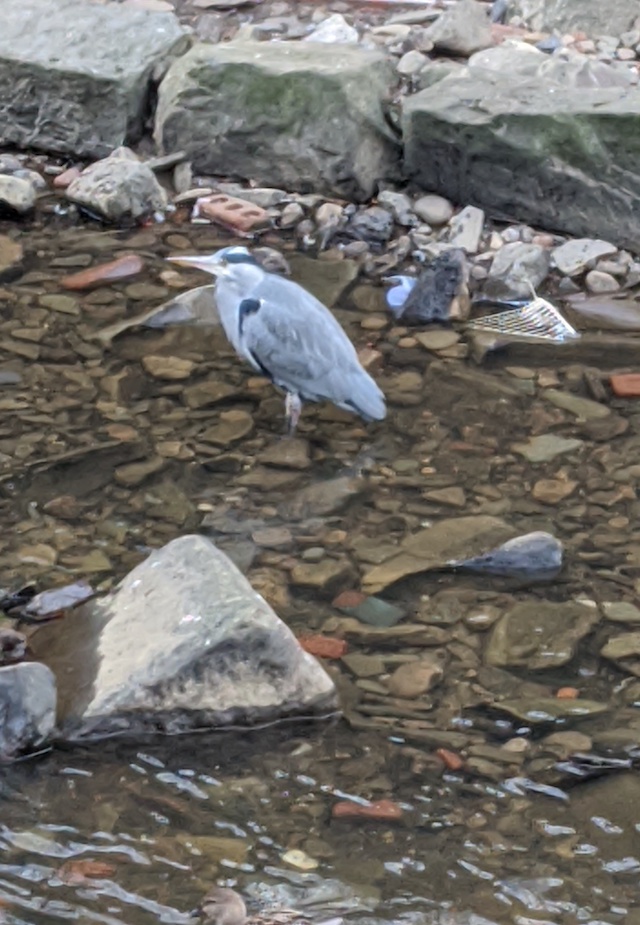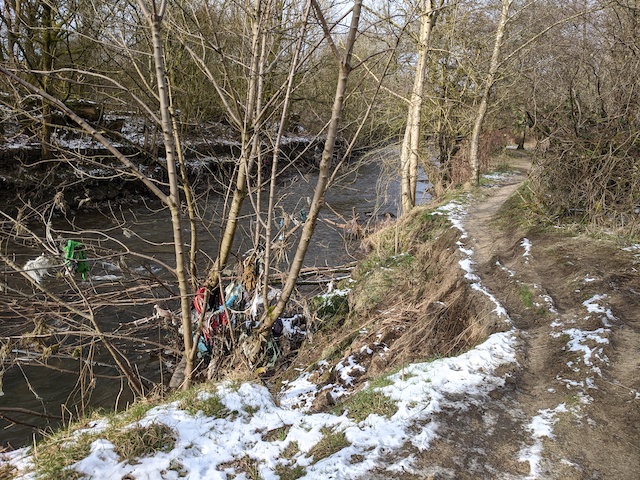#OnePlaceTragedies, #OnePlaceJoys and #OnePlaceThreats
The river Irwell rises in the same moors above Bacup and passes down the valley to Bacup, thence to Rawtenstall and Bury before joining the Mersey at Castlefield in Manchester. For many years Carr Water from the colliery was emptied directly into the river, staining it a deep yellow/brown colour. To this was added the effluent from the numerous mills along the Irwell, drawing water from it to turn their waterwheels and pouring their waste back into it without a thought. In my childhood in Cowpe we regularly went to see what colour Cowpe Brook would be that day, depending on the colours used at the dye mill at the head of the Cowpe valley.
Obviously all this didn't do much good for the wildlife. The river in those days was pretty toxic and children were warned not to play in it - a command routinely ignored of course. Still the main thing which 'flourished' in there was supermarket trollies.
With the closure of the mills and quarries and the advances in environmental regulations the river has become much cleaner regularly. This has come at financial cost; the National Coal Board spent a considerable sum on pumping water from a drainage adit to reedbed settling tanks and before this, cleaning the adit by boat.
The improved cleanliness of the river has been reflected in its wildlife. It is now common to see heron, dipper, kingfisher and goosander along the Irwell as well as the grey waggies, mallard and black headed gulls of course. On a recent walk along the river I was thrilled to count over 20 bird species, not all waterfowl of course but encouraging nevertheless.

There are risks however and these come from two main sources, invasive species and pollution. The main invasive species are non-native: Himalayan balsam (Impatiens glandulifera) and mink (probably Neovision vision but exact species uncertain) released from a farm somewhere - but not locally, so they have spread a fair way to get here. Pollution is mainly strips of plastic which catch on the plant life, the water itself is pretty clear.

This picture illustrates another phenomenon which has increased in recent years, erosion. The path was always prone to erosion, but this has increased in recent years. This is in part due to a change in the river course after a severe storm in 2015 and in part due to cyclists chewing up the footpath.
Garden birds
It seems to have done as I commented after the BGBW that we rarely saw starlings now and hadn't seen any on the lane for three years. Cue six of them on the feeders this morning. Nowhere near the 70 or so we got 25 years ago but it was good to see them.
Another good sighting was the treecreeper. I can't remember when we last had one of those but again it's probably a couple of years.
Altogether 38 birds of 17 species seen today. Happy with that.
January weather







